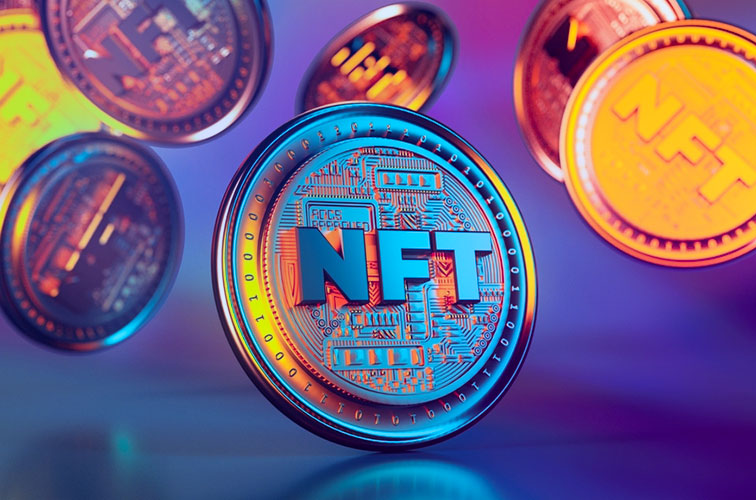In the last few months, non-fungible tokens (NFTs) have taken over, and it is difficult for novices to get their heads around this new development. What is your approach to understanding the NFT boom and using its opportunities?
NFTs have raised public interest with big sales and celebrity name-drops. But, there are still quite a lot of people scratching their heads, having no idea what an NFT is and how it functions.
If you are an NFT newbie and want to start, then it's crucial that there is a clear understanding of what they represent and how these unique artworks can be helpful. Finding a way around the NFT bubble is necessary, taking into account education and consciousness to reflect away from possible obstacles. In this starter manual, we are going to discuss the basics and help you make an informed decision about joining NFTs.
Understanding Non-Fungible Tokens
To understand NFTs, we need to begin with the idea of fungibility. Traditional currencies such as the US Dollar and cryptocurrency, just like Bitcoin, are considered fungible, meaning each piece is interchangeable and stands to have equal value. Alternatively, NFTs signify uniqueness and indissolubility. They're based on blockchain technology, most often using the Ethereum ERC-721 token standard, guaranteeing their uniqueness, authenticity and ownership.
Now that you are clear about the world of NFT let's understand the process of how it works to make the most out of it below.
How NFTs Work
The aspects below can help you understand how NFTs work according to your specific needs and requirements.
- Blockchain Technology: NFTs are based on blockchain technology, which makes ownership of tokens secure and transaction history visible. As a distributed ledger that records every transaction, the blockchain ensures the prevention of counterfeit NFT.
- Smart Contracts: With this, NFTs are generally linked to smart contracts that are digital self-executing agreements where all the terms have been agreed upon and placed directly in them. Smart contracts make it possible to automatically distribute royalty to artists every time their NFT is resold, thus having a new source of income that was rather hard to ensure in the past.
Now that you are clear about the way NFTs work let's understand the different applications they have to make use of.
Applications of NFTs
- Digital Art: The best-known NFT application is the buying and selling of digital art. Artists can now sell their artwork directly at the market without using third parties. Through NFTs, it is possible to determine the authenticity and ownership of digital workpieces that have
- Virtual Real Estate: The ownership of virtual real estate in metaverses is another thrilling application of NFTs. Metaverses are the so-called virtual worlds in which individuals buy, sell and trade digital assets, including lands, buildings or even businesses within the metaverse. By NFTs, people can stake their claim and share in the lively economy of these virtual universes.
Investing in NFTs

If you are thinking about investing in NFTs, the aspects below can make things easier for you to proceed.
- Research and Due Diligence: Like any investment, proper research and due diligence are essential before venturing into the NFT space. Know the project and artist behind an NFT. Evaluate their trustworthiness and potential for value appreciation in the future.
- Marketplaces and Platforms: Many online markets and platforms provide a platform for exchanging NFTs. You must choose reputable platforms that focus on the security of authenticity. OpenSea, Rarible and SuperRare are some of the most popular platforms.
Before moving ahead, it is important that you check with the challenges associated with it to make wise decisions.
Challenges and Considerations
- Environmental Impact: The criticism associated with blockchain technology used for NFTs, in particular Ethereum, is that of the high energy consumption. From an eco-conscious perspective, one needs to assess the carbon footprint of NFT market participation and seek out other platforms with a lesser environmental impact.
- Volatility and Market Risks: The NFT market is quite young and can be very volatile. This is important to keep in mind as the cost of NFTs can vary greatly, and only invest what you are not to.
Final Thoughts
The NFT boom has brought about a new era of digital ownership and investment opportunities. From art to virtual real estate, NFTs have opened up a world of possibilities for creators, collectors, and investors. As a beginner navigating this market, be sure to do thorough research, understand the technology behind NFTs, and consider the risks associated with this emerging asset class. With the right knowledge and careful consideration, you can confidently explore and participate in the NFT revolution.
Disclaimer:Our website provides educational information only and is not intended to provide financial or professional advice. We are not responsible for the accuracy, reliability, or completeness of the information provided. Any reliance you place on the information is at your own risk, and we recommend consulting a qualified professional before making any financial or investment decisions. We are not liable for any loss or damage resulting from the use of our website or the information provided.
